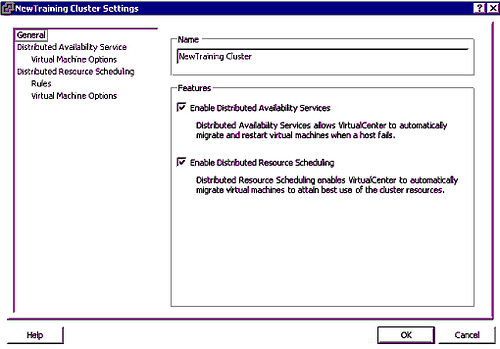Duncan Epping of the highly talented VMware employee pool and Yellow Bricks stardom has released for us a great VMware High Availability (HA) Implementation Notes document. In it, you will find some advanced configuration options for VMware HA – real good stuff that is sure to put your significant other to sleep.
Throughout the document, “das.” appears. What is das and what does it have to do with high availability? For the sake of my kids (whom I hope grow up to be virtualization evangelists and successors to my blog), I’ll explain. Back in the days of the VI3 beta, DAS was an acronym for Distributed Availability Service. But it was not to see the light of day, for VMware often becomes discontent with technology names and acronyms, usually after the labels have already been permanently etched in documentation, books, hundreds or thousands of lines of code, and our brains.
- .dsk files became .vmdk files
- DAS became HA
- ESX Server became ESX
- Most recently, Continuous Availability became FT (Fault Tolerance)
So as seen in the examples above, DAS is nothing more than the “old” name for HA. Apparently, there is more to updating code than using “find and replace” so VMware opted to leave das. configuration instances in the HA product that exists today.
It’s hard to second guess the creative minds at VMware. Maybe they thought DAS would be confused with DRS which was releasing at the exact same time. They would have been right. There are still people walking around today that explain DRS as “Dynamic Resource Scheduler” which is incorrect and drives me up the wall. Distributed. Distributed.

















I’m guilty of the occasional “dynamic” slip from time to time. Besides, it’s dynamically distributed resources when fully automatic, right?
The feature formerly known as Continuous Availability and then Fault Tolerance is now called vLockstep.
No it’s still called FT! FT uses a mechanism called vLockstep to keep the primary and the “ghost” VM in sync 🙂
Like I said on twitter, thanks for the link and compliments, you made me blush.
You’re welcome Duncan. You run a great blog. You don’t have to thank me and we’re both dudes so you certainly don’t have to blush 😀
Or it could be that they thought it would be confused with DAS Directly Attached Storage, 😛
Did you hear about VMware FT? I just read a bit about it onhttp://www.virtualizationteam.com/virtualization-vmware/vmware-esx-40-ft-fault-tolerant-sneak-peek.html
Would u think that would replace VMware HA? I had seen a video even of FT on that link. Is it available yet?
Yes I’ve heard of FT and no I don’t think it’s designed to replace HA. Fault Tolerance (FT) (formerly known as continuous availability) is more of a hot online DR type solution whereas HA is a limited downtime solution where VMs are recovered in the same Datacenter.
Hi,
we are considering to buy a VMware Virtual Center.
We have two servers running VMware Standard edition.
Do you believe it will be worth it? Or do we have to
upgrade our VMware licenses to Enterprise before upgrading
virtual center to make it worth it. I had just read the
following article
VMware virtual center real value
@shankyrhodes
In my opinion, vCenter is worth it, especially when the number of hosts in your environment grows beyond 1 to many. It becomes a real time saver, in addition to the functionality it brings with it. Whether or not it’s worth it for you is completely up to you and your company. If money were no object, then yes, buy it all!